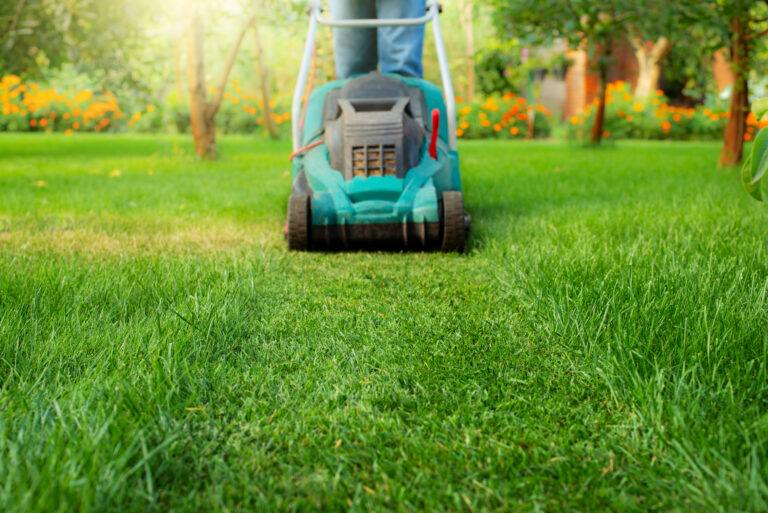Table of Contents
1. Creates a Clean and Polished Look
One of the first things anyone notices about a well-maintained garden is how organized it looks. Garden edging draws the eye by separating different sections—grass from flower beds, mulch from paths, or gravel from sod.
Example:
Imagine a front yard where lush green grass bleeds into the mulch or flower beds. Without edging, the transition looks messy and unfinished. But with a defined edge—such as a sleek metal border or rustic stone—the garden appears carefully designed and professionally landscaped.
Expert Tip:
To maximize the visual impact, match your edging material with your home’s architectural style. For modern homes, consider steel or aluminum. For classic or cottage gardens, go with natural stone or brick.

2. Prevents Grass and Weed Invasion
Grass and weeds are naturally invasive. Without some form of containment, they’ll gradually spread into your planting areas, choking flowers and ornamentals.
Why it matters:
Turfgrass has aggressive roots that can creep into nearby beds.
Weeds often thrive in the loose, rich soil of gardens—especially where mulch or compost is used.
How edging helps:
It acts as a barrier, blocking roots and creating a physical divide that limits this migration. By keeping grass and weeds where they belong, you protect your plants and reduce the time spent weeding or pulling out invaders.
Pro Tip:
Choose edging that extends at least 2–4 inches below the soil surface for maximum weed resistance.
3. Enhances Curb Appeal
Curb appeal isn’t just a buzzword—it’s one of the easiest ways to add value and charm to your home. Edging can enhance the appearance of walkways, garden beds, and even trees by framing each area neatly and intentionally.
Stat to Know:
According to the National Association of Realtors, homes with attractive landscaping can see up to a 12% increase in property value. Clean, symmetrical garden edges contribute to that visual appeal.
Design Ideas:
Use curved edging to soften harsh lines in modern yards.
Opt for brick or stone edging along driveways or front walkways for a timeless look.
Edge around trees with gravel and metal to create tree rings that double as focal points.
4. Improves Landscape Maintenance
A well-edged garden doesn’t just look great—it also saves you time and effort.
Benefits:
Lawn mowers and trimmers have a defined line to follow, reducing the risk of damaging flower beds.
Mulch, bark, or gravel stays in place instead of spilling into the lawn during wind or rain.
Less need to re-cut or re-trench bed edges seasonally.
Homeowner Insight:
Without edging, many people find themselves constantly re-trimming grass that creeps into the beds or replenishing mulch lost to runoff. Edging stabilizes everything and protects your landscaping investment.

5. Offers Design Flexibility
Garden edging isn’t one-size-fits-all. It comes in a wide range of materials and styles, allowing you to tailor your landscape design to match your home’s style and your personal taste.
Popular Materials and Their Benefits:
Plastic/Rubber: Affordable and flexible, great for curved garden beds. Looking for an easy DIY option? Read our detailed guide on How to Install Black Plastic Edging to get started.
Metal (Aluminum or Steel): Sleek, minimalist, and long-lasting; perfect for modern landscapes.
Natural Stone or Brick: Offers a timeless, earthy feel; highly durable and visually striking. If you’re considering brick as your edging material, be sure to check out our step-by-step guide on How to Install Brick Edging around your Garden Beds for a detailed walkthrough.
Wood or Timber: Ideal for rustic or cottage-style gardens; blends seamlessly with natural surroundings.
Concrete Curbing: Provides a permanent, structural edge that’s highly durable and low maintenance.
Creative Uses:
Mix materials (e.g., steel and gravel) to create layered textures.
Use contrasting colors to define garden zones.
Highlight pathways or water features with decorative edging borders.
Customization Tip:
Edging can also help you direct foot traffic or water flow, especially in sloped or erosion-prone yards.



